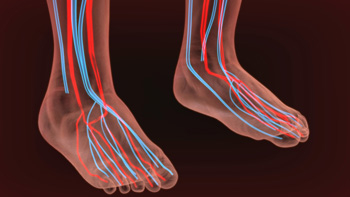
When it comes to foot health, circulation plays an important role. Poor circulation can lead to discomfort, swelling, and severe complications. However, there is a natural solution that often gets overlooked, which is vitamins. Incorporating essential vitamins into your diet can significantly improve foot circulation and overall vascular health. Vitamin E, known for its antioxidant properties, aids in widening blood vessels and promoting efficient blood flow to the extremities, including the feet. Similarly, vitamin C supports collagen production, strengthening blood vessel walls and enhancing circulation. Additionally, vitamin B3, or niacin, has vasodilating effects, meaning it helps widen blood vessels, thus improving blood flow. Additionally, omega-3 fatty acids, while not vitamins per se, are essential for cardiovascular health. Found in abundance in fish oil and certain seeds, omega-3s can reduce inflammation and enhance blood circulation throughout the body, including the feet. By incorporating these essential nutrients into your diet through whole foods or supplements, you can effectively improve foot circulation, ensuring optimal foot health and comfort for years to come. If you have poor foot circulation and are seeking relief techniques, it is suggested that you consult a podiatrist who can discuss how vitamins can play a role in treatment.
While poor circulation itself isn’t a condition; it is a symptom of another underlying health condition you may have. If you have any concerns with poor circulation in your feet contact one of our podiatrists of Sayville Foot Care. Our doctors will treat your foot and ankle needs.
Poor Circulation in the Feet
Peripheral artery disease (PAD) can potentially lead to poor circulation in the lower extremities. PAD is a condition that causes the blood vessels and arteries to narrow. In a linked condition called atherosclerosis, the arteries stiffen up due to a buildup of plaque in the arteries and blood vessels. These two conditions can cause a decrease in the amount of blood that flows to your extremities, therefore resulting in pain.
Symptoms
Some of the most common symptoms of poor circulation are:
- Numbness
- Tingling
- Throbbing or stinging pain in limbs
- Pain
- Muscle Cramps
Treatment for poor circulation often depends on the underlying condition that causes it. Methods for treatment may include insulin for diabetes, special exercise programs, surgery for varicose veins, or compression socks for swollen legs.
As always, see a podiatrist as he or she will assist in finding a regimen that suits you. A podiatrist can also prescribe you any needed medication.
If you have any questions, please feel free to contact our office located in Sayville, NY . We offer the newest diagnostic and treatment technologies for all your foot care needs.
